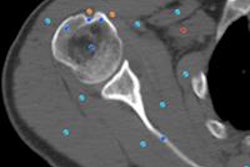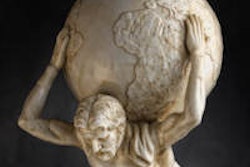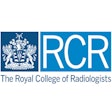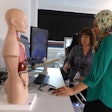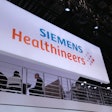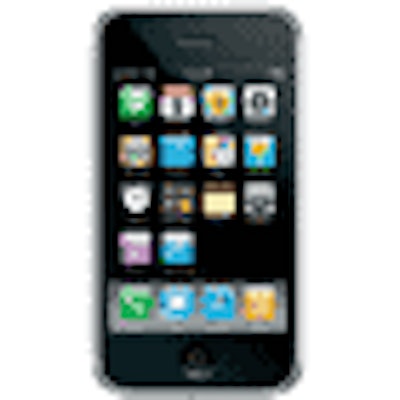
As long as they have an iPhone or iPad, imaging practitioners have plenty of quality radiology-oriented apps to choose from. Users of smartphones and tablets based on other operating systems currently face a more limited selection, however, according to an article published online in the European Journal of Radiology.
A team led by Dr. András Székely of Kenézy Hospital in Debrecen, Hungary, recently performed a comprehensive review of mobile applications for radiology and found quite a few useful iOS offerings related to diagnostic reading, decision support, medical books, interactive encyclopedias, and journal reading. Only a small number of relevant Android, Blackberry, and Windows Phone apps were found, however.
"The past has taught us that despite skepticism and misconception of new technology, later on these technologies [become] established anyway as soon as their full potential has been discovered," said co-author Dr. Roland Talanow, editor in chief of Journal of Radiology Case Reports (JRCR) and president of the Radiolopolis online community. "Especially for the educational and consultation sectors, mobile apps seem to have a bright future."While radiology is the most technologically advanced field in medicine, radiologists have not been as bold as doctors in other clinical areas in exploring the mobile market, he said.
"I think partially this is related to the fact that 'by nature' the radiologist is already connected to a workstation with access to digital media and the drive to utilize other resources is not as high, while for the clinician this opens a new realm of possibilities," Talanow told AuntMinnieEurope.com.
However, this is starting to change as the ability to view studies on mobile devices have increased interest in these devices, he said.
Seeking to illustrate how imaging professionals can make use of smartphones and tablets, the researchers searched the iTunes App Store, Android Market (now known as Google Play), Blackberry App World, and Windows Phone Marketplace (now Windows Phone Store) using the following terms: radiology, x-ray, ultrasound, MRI, CT, radiographer, and nuclear medicine. The review only included English-language software (EJR, 9 January 2013).
The search results were reviewed by two radiologists and one radiology resident. They also identified additional applications by reviewing the list of similar software provided in the application description.
The researchers then downloaded all apps that appeared to be relevant to an appropriate mobile phone or tablet device. A total of 102 applications were initially deemed to be pertinent to diagnostic imaging, but 20 were dropped from the review as they were created for entertainment purposes.
An additional non-English app also was excluded, leaving a total of 81 apps in the final review.
The 81 apps were placed in five categories: diagnostic reading, decision support applications, medical books, interactive encyclopedias, and journal reading programs.
Diagnostic reading
Smartphones and tablets can be an optimal and cost-effective extension of workstations, according to the researchers. For example, referring doctors can access imaging results anywhere from the hospital grounds, according to the authors. Also, time can be saved in the emergency room by having easy access to relevant lab results, medical history, and images.
While the jury is still on whether portable devices should be used for primary reading, the U.S. Food and Drug Administration (FDA) and Health Canada have already cleared a number of iOS applications for diagnostic reading, the researchers noted.
The team indicated a distinction should be made between tomographic images and digital x-ray exams, which have a much higher resolution and wider tonal range.
"Mobile software developers have also addressed this issue," the authors wrote. "The majority of applications in the diagnostic reading category are described as 'not for diagnostic use' or as 'only for nonsignificant risk studies.' "
In a number of studies looking at a variety of different applications, however, researchers have found that interpretations on mobile devices can be performed with similar results to a workstation, according to the authors.
The group said diagnostic reading applications for smartphones and tablets support raw data, and also provide basic image manipulation tools such as zooming, windowing, rotation, and distance measurement. Users can change contrast and brightness, as well.
On the downside, users may find it difficult to perform measurements on the small screen using fingers, and to display both current and prior image data side by side, according to the researchers.
"Viewing such a small screen can also be strainful for the eyes, therefore the FDA stated that these applications cannot substitute dedicated workstations, and that mobile devices are to be used for diagnostic reading only when no workstations are available at hand," the authors wrote.
Medical books
Mobile devices may become important educational tools, as they can store thousands of textbooks, lecture notes, and slides, according to the researchers. For example, users can create a personalized library and transfer documents from a personal computer to a mobile device.
"Text can be underlined, highlighted, or crossed out, and handwritten notes can also be added to these documents," they wrote.
A few medical books also are available as actual applications, with an included search engine and displayed content fully optimized for the device's screen. In addition, simple annotations or embedded videos may be included, according to the authors.
"Although reading off of a backlit in-plane switching panel for a sustained period of time may not be as practical as using a dedicated e-book reader or reading from plain old paper for that matter, the embedded animations, videos, and the sharp, colored images may by far compensate for those disadvantages," the authors wrote.
Interactive encyclopedias
Offering more versatility than e-books, interactive encyclopedias may be a valuable tool for many learners.
"These interactive encyclopedias may open a new dimension in studying by providing the experience of diagnostic reading for those who wish to master it," the authors wrote. "Since the user does not only read a text passively, but scans through the axial slices of a CT scan, for example, studying becomes more efficient and new practical skills may be gained."
The researchers highlighted Radiology 2.0: One night in the ED as one of the better such offerings. Users can choose to read the cases with known or unknown diagnoses.
"For every case the program loads the CT image data for one body section," the authors wrote. "By sliding his finger in the longitudinal direction, one can flip through the slices of a CT scan just as he would do using a dedicated workstation."
They also cited the complimentary iRadiology app as another example of such an interactive encyclopedia.
Decision support applications
Mobile technology can be an important part of the efforts to reduce unnecessary imaging procedures and lower radiation dose, according to the group.
"With the help of evidence-based decision support applications, clinicians, radiologists and technicians may choose the most appropriate examination type based on the leading symptoms, relevant history or initial diagnosis, thus ensuring that the rules of ALARA (as low as reasonably attainable) are kept," they wrote.
The authors pointed out patients have become more involved in the therapeutic process than ever before, and may use mobile apps such as Radiation Passport to estimate cancer risk associated with their radiologic examination.
Other applications can provide calculations of glomerular filtration rate (GFR) values and the amount of contrast agent needed for exams. In addition, some software, including Case Access (Mirada Medical) and RadSnap, are designed to facilitate communication between radiologists and referring physicians.
Journal reading programs
Several applications support mobile viewing of medical journals, and several, including Radiographics and Radiology, offer their own iOS applications. Open access journals, such as the Journal of Radiology Case Reports employ special layouts for mobile devices, according to the researchers.
Pros and cons
Thanks to their portable nature, smartphones and tablets may prove to become valuable tools in everyday imaging practice, thanks to their ability to hold thousands of books, journal articles, radiology images, and lab results, according to the authors. On the downside, they are relatively expensive devices and high-quality applications are only available for a limited number of devices, they said.
"There are numerous applications available for diagnostic imaging professionals on the iOS platform, but the other platforms are expected to catch up soon," the authors wrote.
The small screen size also is a limiting factor.
"Irrespective of device and platform, it is a matter of taste whether the increase of mobility -- being available anytime from anywhere -- is an advantage or a disadvantage," the authors concluded.
Consultation and education may be the two areas where radiologists and radiology students and residents would benefit the most from mobile devices, Talanow said.
Székely believes that the apps that hold the most promise for radiologists are those that are not aimed specifically at any medical specialty, such as simple reading apps. Interactive encyclopedias such as Radiology 2.0 and journal reading apps such as JRCR's mobile app are also great, he said.
"I would like to see more full-scale books designed specifically for mobile devices," Székely said. "Interactive encyclopedias are a good start but we need more textbooks applications with lots of interactive content such as videos, animations, and so on. Thanks to iBooks Author the iOS platform has a big advantage over the competition but there is much work to be done in this area."
It was a little surprising that there were so few relevant apps available on the Blackberry, Windows Phone, and Android platforms, Székely said.
"I would have though that programmers would release their work on all platforms simultaneously, but on many occasion that was not the case, he said. "Some apps are exclusive to a given platform."
Székely also noted that ultrasound was underrepresented among the popular modalities. There were only two books and one interactive encyclopedia on this topic.
"Even in apps that highlight cases it is rare to come by an ultrasound image," he said. "I personally would like to see Jane Bates' books on ultrasound in interactive mobile version."
Talanow noted that second and third-world countries seem to be more open to using mobile applications, particularly for clinical/consultation use.
In addition to doctors, radiographers and even patients can use mobile apps related to radiology, Székely said. For example, there are many excellent interactive books on radiographic positioning, many different look-up tables, and tools for calculating [glomerular filtration rate]. Patients may also track the type of examinations and estimate the amount of radiation that they were exposed to using dedicated apps.
"Without a doubt, the next chapter in radiology education is here, but a lot more quality apps need to be developed and people should be made aware of these novel opportunities," he said.
|
Study disclosures Co-author Dr. Roland Talanow is editor in chief of the Journal of Radiology Case Reports and president of the Radiolopolis community, and has been involved in the development process for the RadSnap application that was mentioned in the article. |





